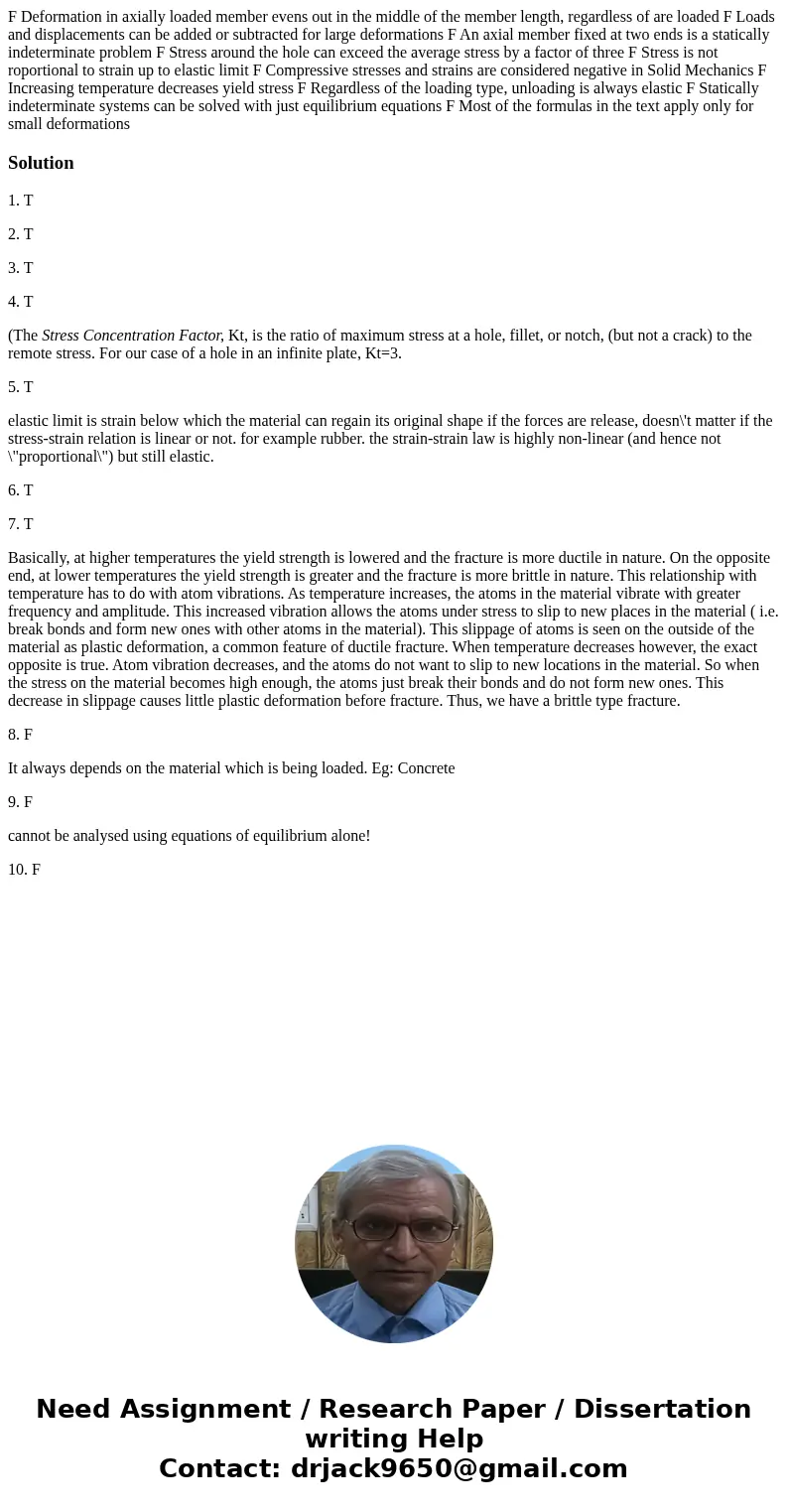F Deformation in axially loaded member evens out in the midd
Solution
1. T
2. T
3. T
4. T
(The Stress Concentration Factor, Kt, is the ratio of maximum stress at a hole, fillet, or notch, (but not a crack) to the remote stress. For our case of a hole in an infinite plate, Kt=3.
5. T
elastic limit is strain below which the material can regain its original shape if the forces are release, doesn\'t matter if the stress-strain relation is linear or not. for example rubber. the strain-strain law is highly non-linear (and hence not \"proportional\") but still elastic.
6. T
7. T
Basically, at higher temperatures the yield strength is lowered and the fracture is more ductile in nature. On the opposite end, at lower temperatures the yield strength is greater and the fracture is more brittle in nature. This relationship with temperature has to do with atom vibrations. As temperature increases, the atoms in the material vibrate with greater frequency and amplitude. This increased vibration allows the atoms under stress to slip to new places in the material ( i.e. break bonds and form new ones with other atoms in the material). This slippage of atoms is seen on the outside of the material as plastic deformation, a common feature of ductile fracture. When temperature decreases however, the exact opposite is true. Atom vibration decreases, and the atoms do not want to slip to new locations in the material. So when the stress on the material becomes high enough, the atoms just break their bonds and do not form new ones. This decrease in slippage causes little plastic deformation before fracture. Thus, we have a brittle type fracture.
8. F
It always depends on the material which is being loaded. Eg: Concrete
9. F
cannot be analysed using equations of equilibrium alone!
10. F

 Homework Sourse
Homework Sourse